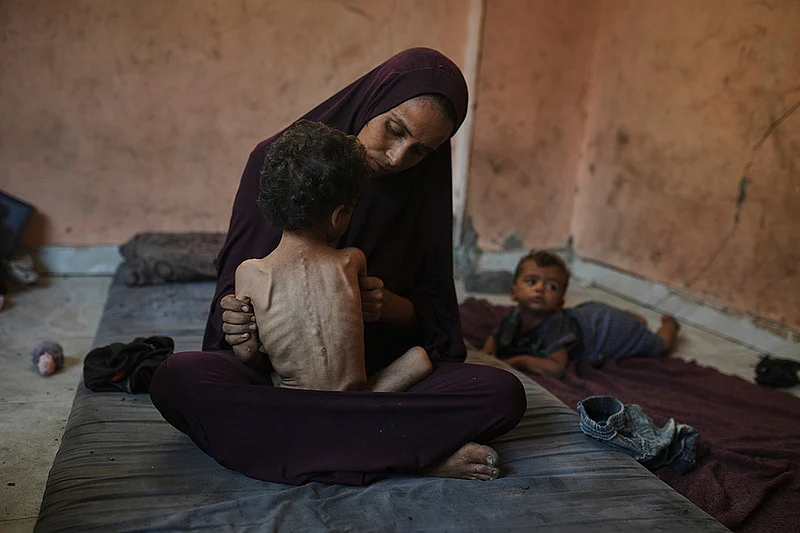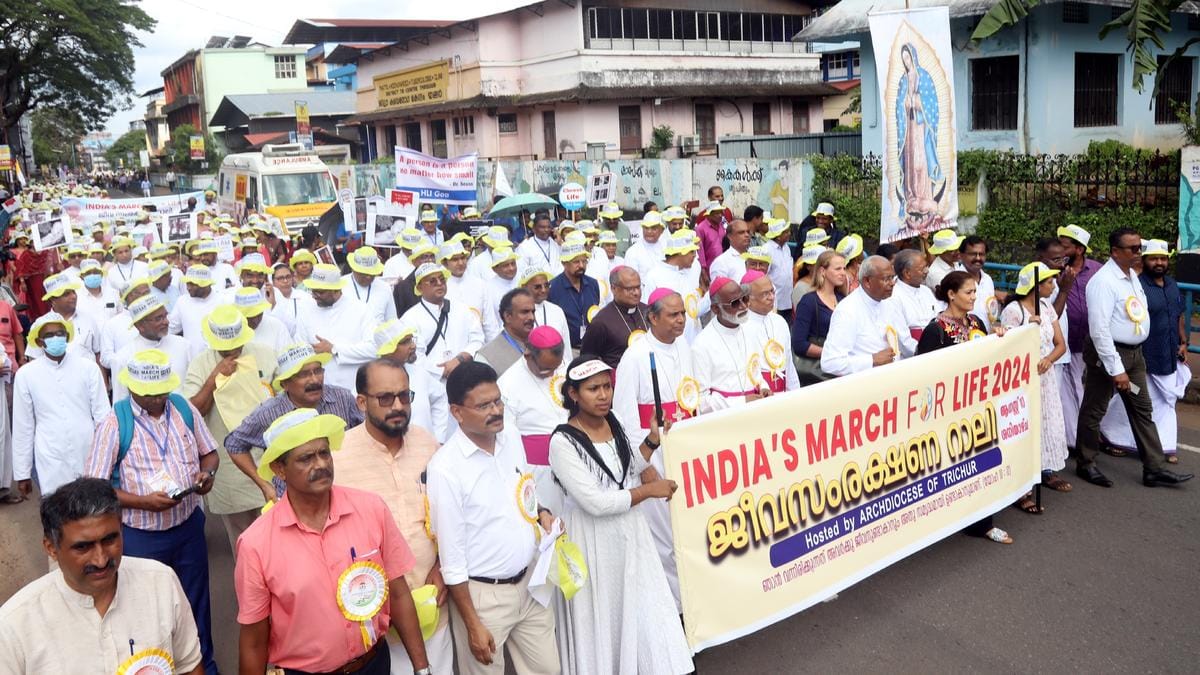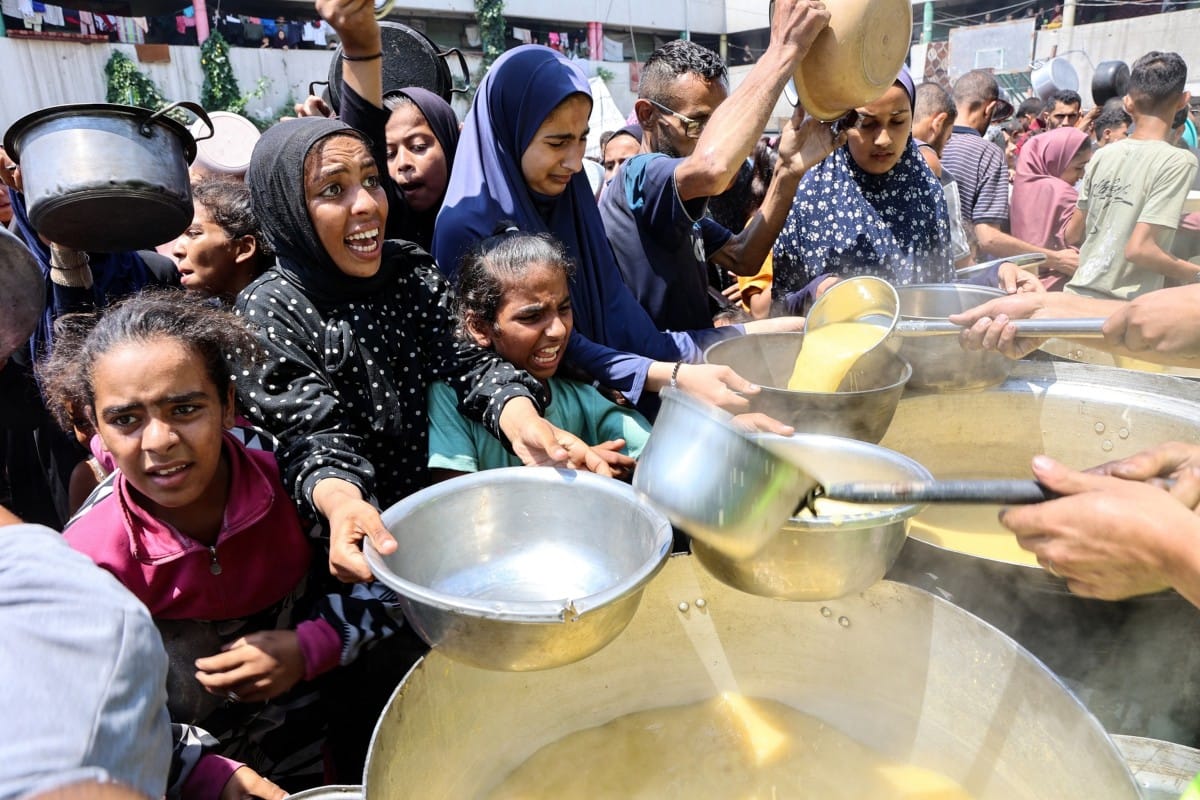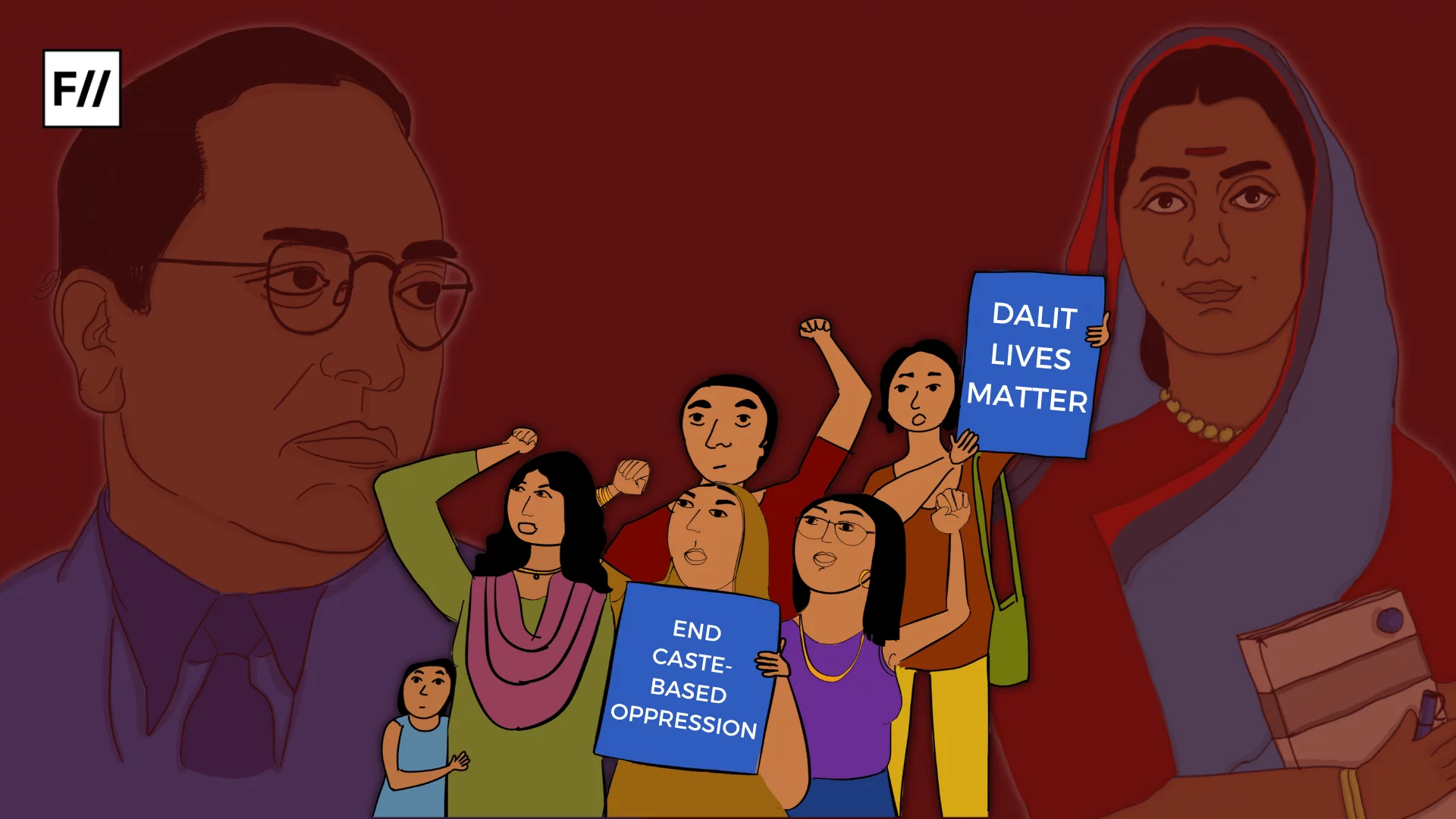Since October 2023, Israel’s blockade and shelling have triggered a devastating famine and starvation in Gaza. UN agencies report that women and children—67% of total casualties—are paying the highest price. Aid agencies now caution that famine is on the brink. By mid-2025, Gaza’s food crisis had reached ‘the most critical levels’, with famine levels already crossed. UN and NGO reports highlight that this is a human-made disaster: in the words of one UN expert, Gazans are suffering through ‘a humanitarian catastrophe of epic proportions’. The Integrated Food Security Phase Classification (IPC), a globally recognised standard for classifying the severity of food insecurity and acute malnutrition, confirmed that Gaza has achieved two out of three worst-case famine indicators, alerting that all-encompassing catastrophic food insecurity and child malnourishment were everywhere present in the territory. In practical terms, over a third of Gazans now go without a meal for days, and an estimated 500,000 individuals (a quarter of the population) live in conditions of famine.
The plight of Gaza’s children amid famine
Gaza’s children are suffering severely. UNICEF says that in Gaza, malnutrition among the children under the age of five is now catastrophic: for instance, nearly one out of every five children under the age of five in Gaza City is acutely malnourished, a figure that has more than doubled since mid-2024. More than 320,000 children (Gaza’s entire under-5 population) are at risk of acute malnutrition.

Medical records indicate that wasting and hunger-related illnesses are increasing; UNICEF reports that two out of three famine indicators have been breached and that 80% of all reported starvation deaths involve children. Gaza’s Health Ministry testified that malnutrition has already claimed dozens of children: as of early April 2024, 27 deaths of children due to starvation were confirmed in Gaza hospitals, and Save the Children subsequently reported 93 deaths of children due to malnutrition from the war’s outset (25 of them in July 2025 alone).
Women, particularly pregnant and lactating women, are also affected severely. Save the Children says that in July 2025 nearly 43% of pregnant and breastfeeding women they screened at Gaza clinics were clinically malnourished.
These statistics match grim family testimonies. In July 2025, Reuters recorded Gazan parents going to ‘extreme lengths’ to feed babies who are unable to digest solid foods. A three-month-old’s grandmother was spotted grinding chickpeas into pulp in an attempt to entice a few calories into the infant, aware of the fact that this might hurt the baby. It is corroborated by aid agencies that infant milk powder is all but unobtainable and many women are malnourished enough to be unable to lactate. In this vacuum, parents said they fed babies boiled water with herbs or legumes—a practice UNICEF cautioned is ‘not safe for infants’ and has the potential to lead to serious illness.’
Impact on mothers and maternal health
‘Women, particularly pregnant and lactating women, are also affected severely. Save the Children says that in July 2025 nearly 43% of pregnant and breastfeeding women they screened at Gaza clinics were clinically malnourished. That is close to three times the prevalence recorded before the complete siege started. This pregnancy malnutrition has serious repercussions: it leads to anaemia, haemorrhage or even death of the mother and can lead to stillbirth or low birthweight.

A Save the Children press release clarifies that undernutrition in Gaza ‘can cause stillbirth, low birthweight, stunted growth and developmental delays in children’. Gaza already has an estimated 50,000 pregnant women (approximately 180 births per day). Well short of the war, approximately 15% of pregnancies in Gazan women were complicated; now these women have essentially zero access to emergency obstetric care.
WHO cautions that with so many maternity units closed (14 hospitals and 45 clinics closed in Gaza) and fuel shortages disabling ventilators and incubators, ‘maternal deaths are expected to increase’, and war stress is already causing miscarriages and premature births.’
Structural causes: blockade and violence
‘The gendered hunger emergency is grounded in political and structural reasons. Israel’s blockade has cut off vital supplies: no fuel has arrived in Gaza since October 2023, shutting down bakeries, water treatment plants and hospitals. The ongoing aerial and ground shelling has bulldozed or shut down scores of healthcare facilities and infrastructure. For instance, the maternity hospital Al-Hilwani was bombed in November 2023.

Large-scale displacement results in almost half of Gaza’s population (particularly women and children) packing into UNRWA shelters with little water and food. Humanitarian convoys experience endemic delays and attacks, leaving UN agencies with mere scraps of fuel and medicine. These cumulative attacks—blockade, siege, bombardment—have destroyed Gaza’s economy and local agriculture. Livelihoods have been shattered: farmers are unable to plough land, traders are unable to import or sell, and the majority of Gazans lost their livelihoods.’
Gendered consequences and long-term outlook
‘These catastrophic damages in Gaza might cause prospects for long-term destruction and severe consequences for women and children. Among which maternal health is of paramount concern. More than 50,000 Gazan women are pregnant under siege. Maternal deaths are expected to increase dramatically, as women give birth under unskilled care and without equipment. WHO has predicted an increase in stress-related miscarriages and stillbirths. Nutrient deficiencies and infection among mothers will also reduce fertility health and increase future maternal danger.
Gaza’s famine and starvation crisis is an Israeli orchestrated man-made disaster which is completely avoidable and contain serious gendered consequences. Women and children have suffered from violence and blockade since the beginning. As UNICEF and relief workers emphasis, Gaza is already seeing children ‘starve and die before our eyes’.
Child Development: A whole generation of Gaza’s children are at risk of chronic malnutrition. Acute malnutrition in under-fives in Gaza City has risen dramatically—almost 20% of the children are now wasted. UNICEF and Save the Children highlight that early malnutrition results in stunted growth and mental delay. Even if a child manages to survive, the harm to brain and immune development can last a lifetime. With schools shut down and families traumatised, the educational and psychological impact on children is likewise dire.
Food Security and Economy: Gaza’s local food systems have been dismantled. Prior to October 2023, Israel was permitting around 500 trucks of food aid daily; after the blockade, this reduced to just dozens, significantly short of the IPC’s estimated 62,000 tonnes of monthly need. FAO is adamant that there is widespread hunger not because there is not enough produce but because access is being denied: Israel’s blockade has brought imports to a standstill and ruined agriculture. With bank systems shut down and cash reserves drained, Gazan families cannot afford to purchase even the modest food that comes in.
Gender-Based Violence (GBV): Food crises have a tendency to heighten GBV, and Gaza does not escape this pattern. UNFPA reports that an estimated one million girls and women in Gaza are currently living in ‘perilous conditions’. With shelters mostly full and basic services in disarray, many women indicate they are facing greater abuse and exploitation. Relief organisations have reported escalating incidents of domestic violence and reports of sexual assault, as pressures of survival intensify. Since shelters and lines for relief are poorly protected, women going out to gather food or water tend to be vulnerable to harassment.

Psychosocial Trauma and Societal Consequences: The psychological cost of conflict is particularly severe for children and mothers. The desperation has been conveyed in poignant testimony—one CARE aid worker documented children stating they would be better off dead than hungry. These traumas, combined with malnutrition, will damage Gaza’s long-term human development. Teachers and child psychologists caution that a generation born during a famine will face learning issues and health issues that continue into adulthood.’
Gaza’s famine and starvation crisis is an Israeli orchestrated man-made disaster which is completely avoidable and contain serious gendered consequences. Women and children have suffered from violence and blockade since the beginning. As UNICEF and relief workers emphasis, Gaza is already seeing children ‘starve and die before our eyes’. The combination of food shortages, failing healthcare and widespread fear makes it so that if the siege isn’t lifted, Gaza’s women and children are facing a humanitarian disaster on an unprecedented scale. In the short term, we have already witnessed spikes in maternal and child mortality, and in the long term, we stand to lose a generation to stunting, trauma and lost opportunity.’




